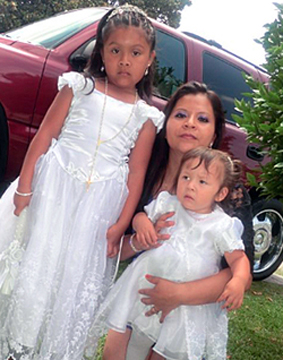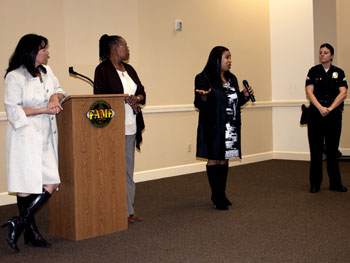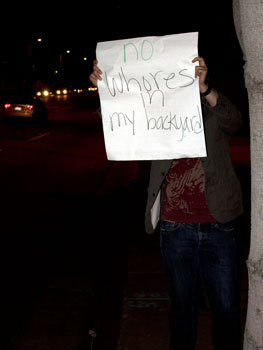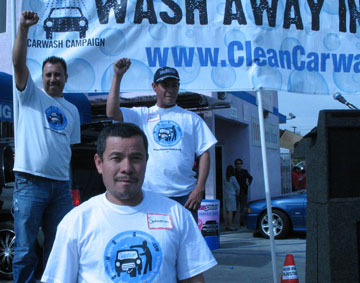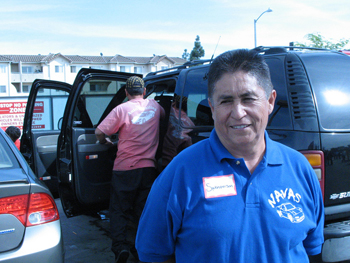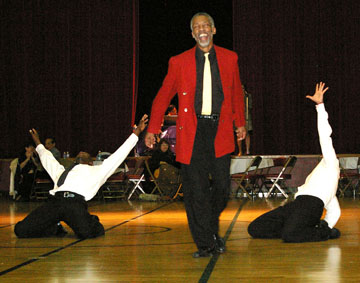
Central Avenue Dance Ensemble founder Chester Whitmore
Central Avenue remains synonymous with L.A.’s thriving jazz and rhythm and blues scene of the mid twentieth century.
Luminaries like Lionel Hampton and Charles Mingus defined the sounds emanating from the heart of the African-American community.
Enter Central Avenue Dance Ensemble, founded in 2003 by celebrated dancer Chester Whitmore.
“A long time ago we used to be inside of a church on 62nd and Normandie, and it had a giant ballroom in it. We used to do this thing called ‘Swinging in the Hood’ once a month, and do ballroom and swing with a live big band.”
Chester Whitmore is a choreographer, instructor, historian and musician who has played with the Count Basie Orchestra. His company Black Ballet Jazz specialized in Afro-American vernacular dance and toured the world for 15 years.
“One of the amazing things about Chester is he’s not just into teaching you dance steps, but also the history,” said Central Avenue’s Managing Director Ron Parker. “Where this happened? Who was involved?”
One of Central Avenue Dance Ensemble’s proudest accomplishments is a revival of a two-hour, multimedia show, “The History of Black Dance in America.” The first act opens in Africa and then journeys to the New World, and by the time the curtain closes we’ve seen dances from the early 1800s to the present day. Some of these dances include Walking the Dog in the early 1900s, Lindy Hop in the ‘30s, Big Apple in the ‘40s, Swing in the ‘50s and early ‘60s, and one of my favorites, Charleston in the 1920s.
Whitmore points to popular TV shows like “Dancing With the Stars” and “America’s Best Dance Crew” for spurring a renewed interest in dance. “You have to have the new stuff, but they got to know where it comes from,” he said. “We have to tell them about a foundation.,”
Central Avenue Dance Ensemble performs for high schools, hosts workshops and residencies and offers classes and demonstrations.









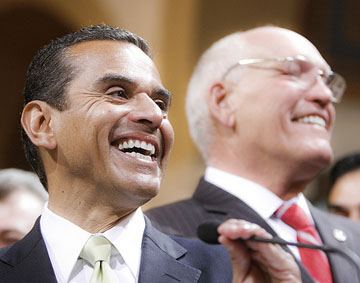 As Black History Month draws to a close, one group in South Los Angeles is just starting a celebration of the future of African Americans.
As Black History Month draws to a close, one group in South Los Angeles is just starting a celebration of the future of African Americans.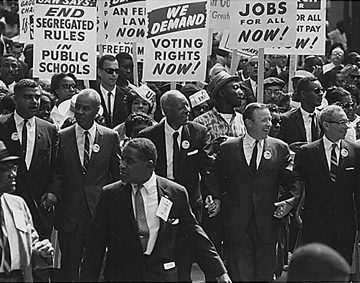
 Ten years ago the Neighborhood Council system began to try to make city call more responsive to all parts of the city. Volunteers from all over Los Angeles dedicate their own time to tackling problems in their neighborhoods. They are people like Iona Diggs, who is on Chair of the Voices of 90037. Diggs was recently interviewed by Journalist Melissa Leu.
Ten years ago the Neighborhood Council system began to try to make city call more responsive to all parts of the city. Volunteers from all over Los Angeles dedicate their own time to tackling problems in their neighborhoods. They are people like Iona Diggs, who is on Chair of the Voices of 90037. Diggs was recently interviewed by Journalist Melissa Leu.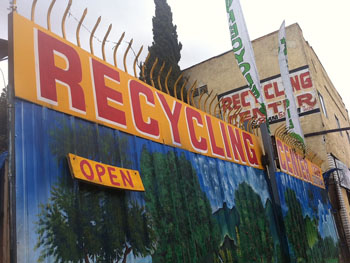
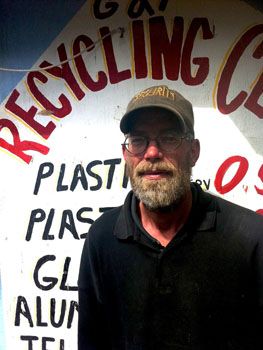
 When Deanne D’Antignac received the call asking if she would care for her niece, she said “yes.” The only other option was to turn her over to strangers. She did not know that the care of one niece would turn into permanent legal guardianship of three nieces and the sacrifice of her career and financial security.
When Deanne D’Antignac received the call asking if she would care for her niece, she said “yes.” The only other option was to turn her over to strangers. She did not know that the care of one niece would turn into permanent legal guardianship of three nieces and the sacrifice of her career and financial security. 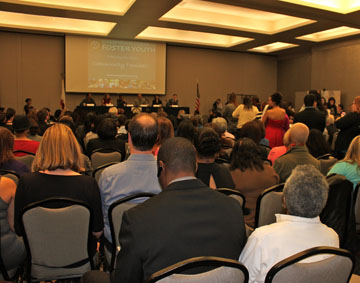 “When I received the phone calls, I did not have time to prepare like a foster parent would. This is not a job that I applied for; and early on, I did not receive money or training for them,” said D’Antignac, who had to quit her job as a physician’s assistant to care for her three nieces.
“When I received the phone calls, I did not have time to prepare like a foster parent would. This is not a job that I applied for; and early on, I did not receive money or training for them,” said D’Antignac, who had to quit her job as a physician’s assistant to care for her three nieces.  “It took a year to get services for my granddaughter; by then, she was darn near psychotic from not having medicine [for mental illness],” said Lee.
“It took a year to get services for my granddaughter; by then, she was darn near psychotic from not having medicine [for mental illness],” said Lee. 